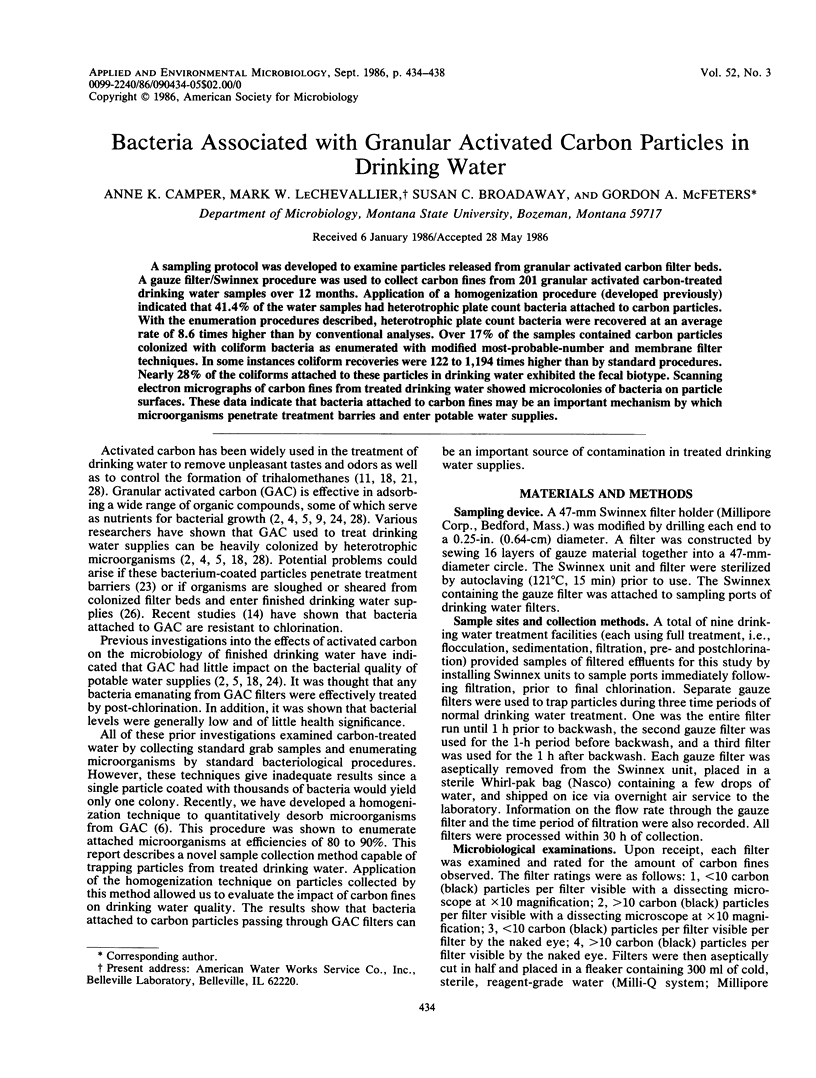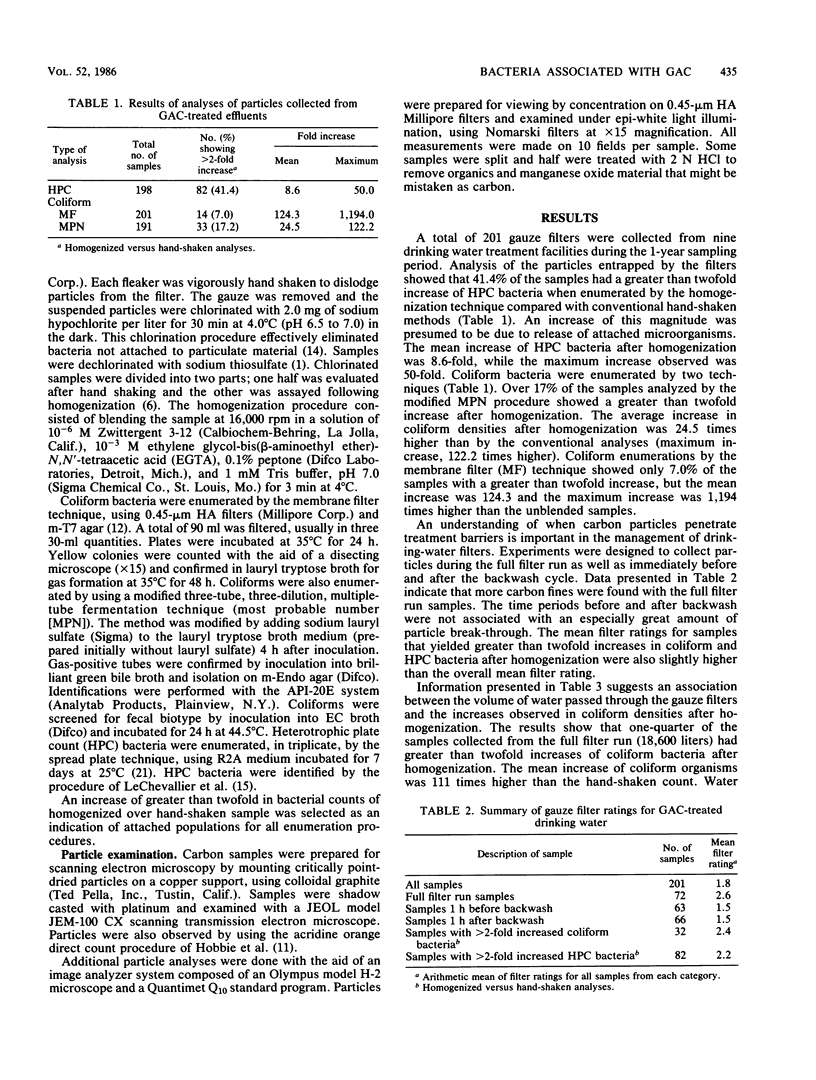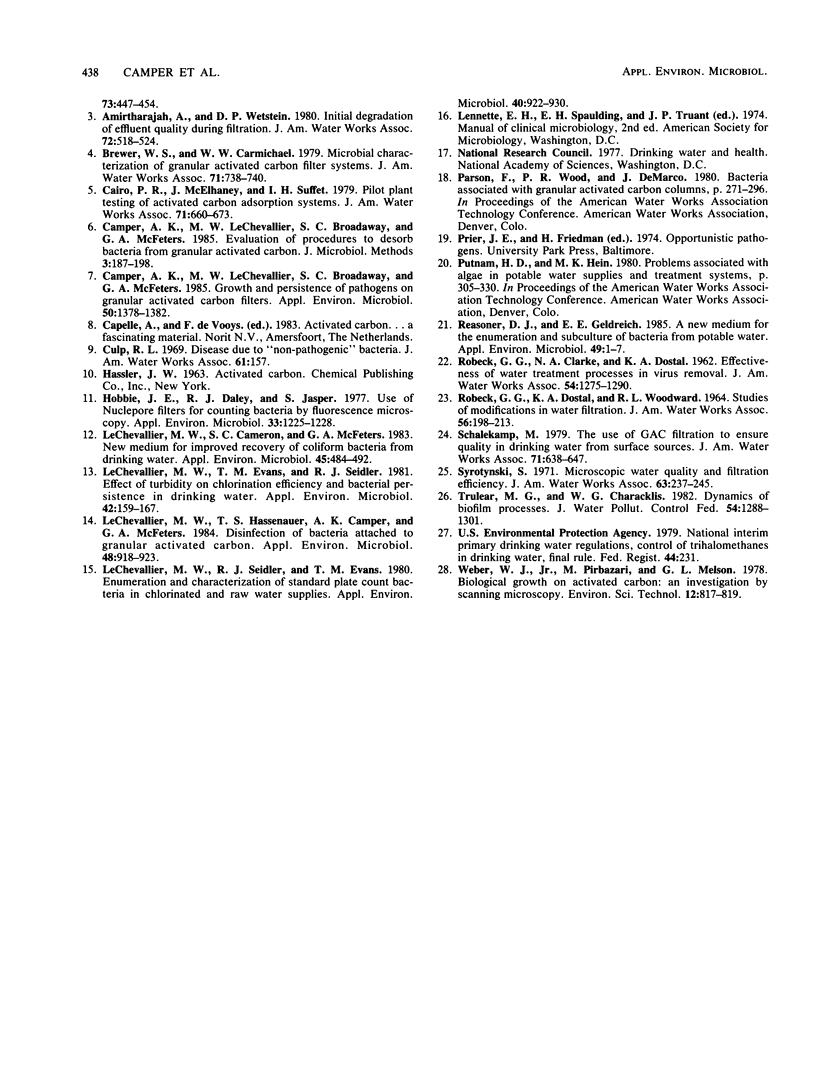Abstract
A sampling protocol was developed to examine particles released from granular activated carbon filter beds. A gauze filter/Swinnex procedure was used to collect carbon fines from 201 granular activated carbon-treated drinking water samples over 12 months. Application of a homogenization procedure (developed previously) indicated that 41.4% of the water samples had heterotrophic plate count bacteria attached to carbon particles. With the enumeration procedures described, heterotrophic plate count bacteria were recovered at an average rate of 8.6 times higher than by conventional analyses. Over 17% of the samples contained carbon particles colonized with coliform bacteria as enumerated with modified most-probable-number and membrane filter techniques. In some instances coliform recoveries were 122 to 1,194 times higher than by standard procedures. Nearly 28% of the coliforms attached to these particles in drinking water exhibited the fecal biotype. Scanning electron micrographs of carbon fines from treated drinking water showed microcolonies of bacteria on particle surfaces. These data indicate that bacteria attached to carbon fines may be an important mechanism by which microorganisms penetrate treatment barriers and enter potable water supplies.
Full text
PDF




Selected References
These references are in PubMed. This may not be the complete list of references from this article.
- Camper A. K., LeChevallier M. W., Broadaway S. C., McFeters G. A. Growth and persistence of pathogens on granular activated carbon filters. Appl Environ Microbiol. 1985 Dec;50(6):1378–1382. doi: 10.1128/aem.50.6.1378-1382.1985. [DOI] [PMC free article] [PubMed] [Google Scholar]
- Hobbie J. E., Daley R. J., Jasper S. Use of nuclepore filters for counting bacteria by fluorescence microscopy. Appl Environ Microbiol. 1977 May;33(5):1225–1228. doi: 10.1128/aem.33.5.1225-1228.1977. [DOI] [PMC free article] [PubMed] [Google Scholar]
- LeChevallier M. W., Cameron S. C., McFeters G. A. New medium for improved recovery of coliform bacteria from drinking water. Appl Environ Microbiol. 1983 Feb;45(2):484–492. doi: 10.1128/aem.45.2.484-492.1983. [DOI] [PMC free article] [PubMed] [Google Scholar]
- LeChevallier M. W., Evans T. M., Seidler R. J. Effect of turbidity on chlorination efficiency and bacterial persistence in drinking water. Appl Environ Microbiol. 1981 Jul;42(1):159–167. doi: 10.1128/aem.42.1.159-167.1981. [DOI] [PMC free article] [PubMed] [Google Scholar]
- LeChevallier M. W., Hassenauer T. S., Camper A. K., McFeters G. A. Disinfection of bacteria attached to granular activated carbon. Appl Environ Microbiol. 1984 Nov;48(5):918–923. doi: 10.1128/aem.48.5.918-923.1984. [DOI] [PMC free article] [PubMed] [Google Scholar]
- LeChevallier M. W., Seidler R. J., Evans T. M. Enumeration and characterization of standard plate count bacteria in chlorinated and raw water supplies. Appl Environ Microbiol. 1980 Nov;40(5):922–930. doi: 10.1128/aem.40.5.922-930.1980. [DOI] [PMC free article] [PubMed] [Google Scholar]
- Reasoner D. J., Geldreich E. E. A new medium for the enumeration and subculture of bacteria from potable water. Appl Environ Microbiol. 1985 Jan;49(1):1–7. doi: 10.1128/aem.49.1.1-7.1985. [DOI] [PMC free article] [PubMed] [Google Scholar]


